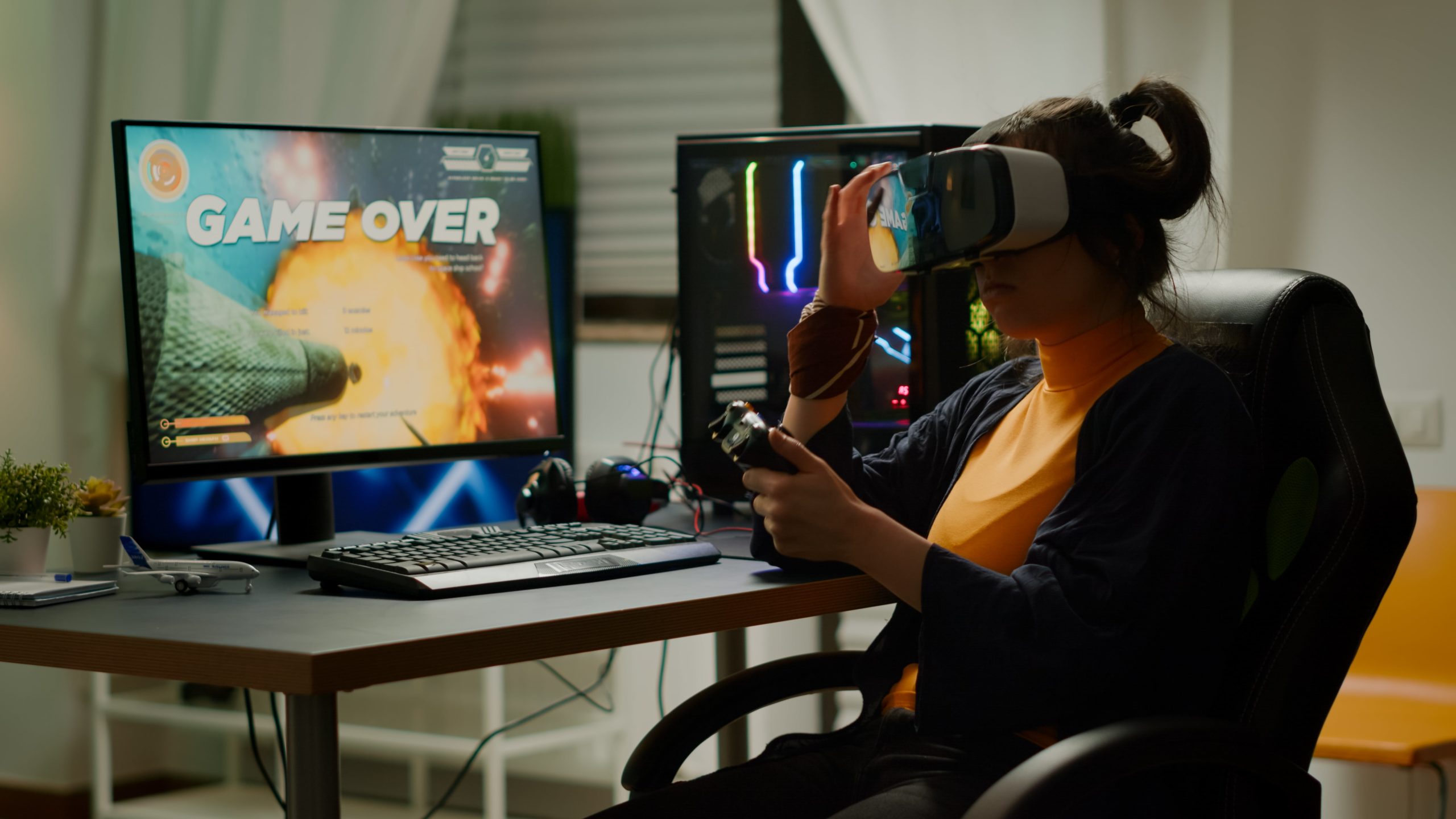In the early days of computer games, players were promised that, one day in the not too distant future, virtual reality would revolutionise the gaming experience. We would put on headsets and explore vast immersive worlds without ever leaving our chairs. The technology exists now, but sales have been disappointing. Many are put off by restrictive pricing, while others find the experience unpleasant and antisocial. Is it too soon to call time on VR gaming, or should we accept that the public simply aren’t interested?
VR for the masses
In 2014, Facebook purchased the VR company Oculus, makers of the Oculus Rift VR headset. Many saw this as a sign that VR gaming was finally poised to enter the mainstream. ‘Is this finally virtual reality’s big moment?’ asked The Guardian at the time. The headset went on sale in 2016 to much fanfare. Barack Obama famously tried it out as part of a virtual tour of the White House. The headset is embedded with LED lights which are tracked by a motion sensor positioned close to the user. The lights are on the back as well as the front of the headset, allowing a fully 360 degree experience.
A year on, the results have been mixed to say the least. Facebook/Oculus haven’t released sales figures for their headset which, according to Natasha Lomas from TechCrunch, ‘speaks volumes’ about its level of success. She notes that, despite a lack of concrete figures, ‘analyst estimates aren’t generous, suggesting <500k units.’ The fact that Facebook also slashed the price of its device by over $200 this summer also suggests that they are struggling to shift units.
So why the lack of excitement? The high price is obviously a sticking point for many, even after the reduction. Many users have also complained of dizziness and motion sickness spoiling their enjoyment of the device. However, the main problem might be part of a wider shift in the public’s attitude to gaming. The days of the lone gamer in their bedroom are long gone. Gaming is now a mainstream social activity. Couples play games together. Parents play games with their children. In the current climate, a VR headset is just too antisocial. It isolates the player, not just from the external world, but from other players. Speaking to TechCrunch, an unnamed entrepreneur summed up the problem:
‘How would you exchange raised eyebrows and knowing glances with your significant other if you’re both blinkered by a wearable? Frankly, if the tech can’t be playful it just won’t be functional.’
Accepting the limitations
Valve are best known for the online gaming platform Steam, but have also entered the VR market with their HTC Vive headset, currently the main competitor to the Oculus Rift.
Valve CEO Gabe Newell is optimistic about the future of VR but also realistic about its limitations. In a recent interview, he said that ‘We think VR is going great. It’s going in a way that’s consistent with our expectations.’ However, he also acknowledged the possibility that ‘the idea that it will turn out to be a complete failure.’ Known for being brutally honest, Newell summed up the limitations of the company’s current VR offering: ‘Vive is the most expensive device on the market. It’s barely capable of doing a marginally adequate job of delivering a VR experience.”
Newell is right. Current VR technology is barely up to scratch, but that’s no reason to assume it won’t improve. If companies like Valve can recognise the current drawbacks of VR, it is more likely that they can solve them. The public have an appetite for VR gaming in theory, but the (virtual) reality has so far failed to live up to expectations. It is still early days though. It is possible that VR technology will improve to the point that it becomes indispensable. VR could be made more sociable with smaller, lightweight headsets, perhaps resembling Google Glass. Social gaming is the future and VR needs to find a way to fit comfortably into this landscape. Only then will the public embrace it.






